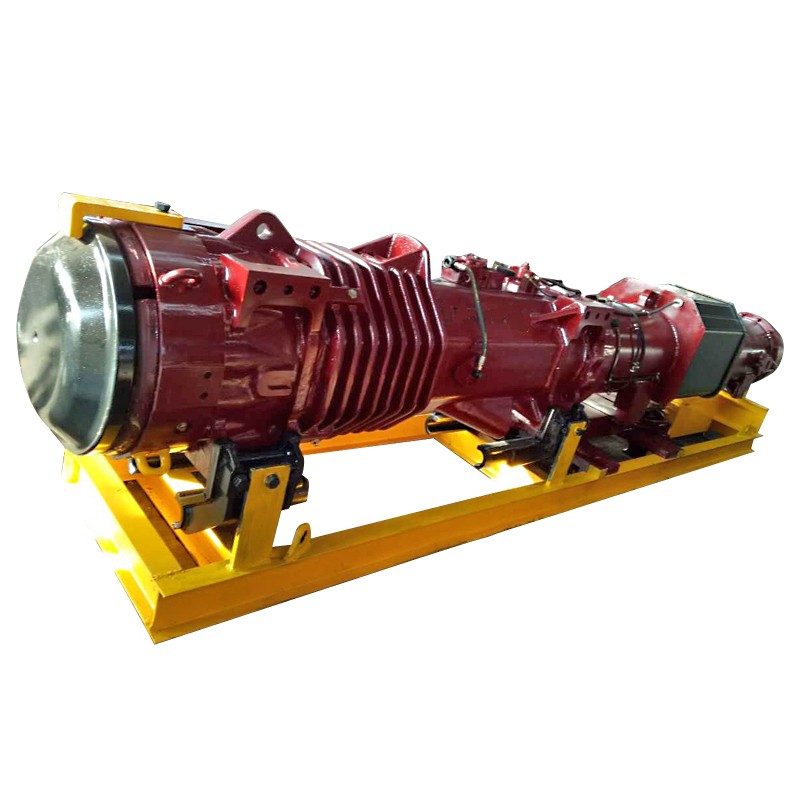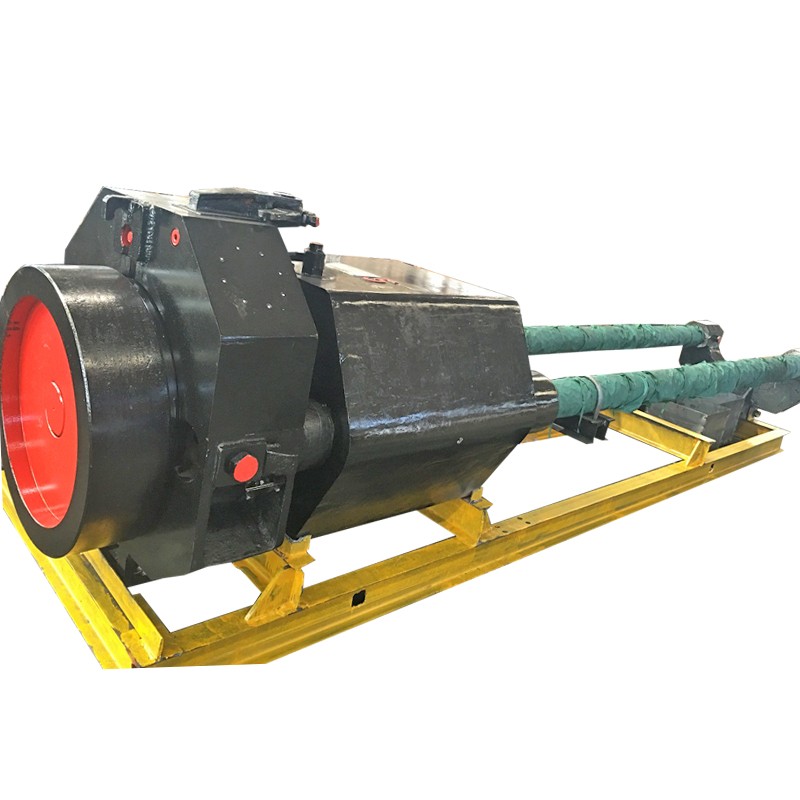Striking the Balance: What Powers a Hydraulic Impact Hammer?
Foremen often rewind to the ram: What propels a Hydraulic Impact Hammer into the piling portfolio? At its heart, this precision tool harnesses the excavator's hydraulic flow to lift and drop a heavy ram within a sealed cylinder, generating focused impacts—typically 50-200 kN—that transfer directly to the pile without wasteful side loads. Fanya's HI-50, for instance, bolts onto 20-30 ton carriers via a quick coupler, its dual-acting cylinder stroking up to 1,700 mm for customizable energy that embeds 300mm casings 12m deep in clays with 60-80 blows per minute.
This hydraulic heavy-hitter traces roots to 1970s oilfield innovations, but 2025 refines it relentlessly: With urban piling surging 22% amid housing booms and retrofits, crews crave attachments that clamp on fast and calibrate on command, clocking 10-15 m/hour in mixed grounds where fixed-force foes falter. Our HI-100 ramps pressure from 200 to 250 bar on the fly, its flow-regulator syncing with the host pump for stroke tweaks that match soil resistance. As one practical breakdown notes, "It uses hydraulic power to drive various pile types into the ground with controlled energy and stroke," a control that contractors credit for cleaner caps and fewer cracks. Fanya sharpens this with pressure-relief valves that cap overblows at 350 bar, preventing pile damage in variable virgins.
Shifting from schematic to swing, picture a bridge crew coupling the HI-80 to a 40-ton Komatsu: The operator dials energy to 80 kN, the ram rises 1,200 mm on upstroke oil, then plunges freely to strike—seating a 400mm precast 18m into gravel in eight minutes. In our Xuzhou proving grounds, we've proofed this for scopes from 30-pile retaining walls to 150-pile quay quays, showing hydraulic pile hammers conform to carriers without caveat.
The drive, though, derives from their dialed-in dynamics. These hammers modulate mid-motion, needing no separate packs— a perk for multi-tool machines that toggle from trenching to tapping in 15 minutes. As piling paces accelerate with $1.8 trillion in global builds by mid-decade, hydraulic impact hammers rise responsive, their adjustable amplitudes (20-50 mm) suiting sands to stiffs. We've fitted fleets where a single HI-120 drove 90% of H-piles plumb, underscoring how tunable torque turns tough tasks into triumphs.
The Impactful Imperatives: Why Hydraulic Impact Hammers Dominate in Control and Consistency
Fanya fabricates Hydraulic Impact Hammers with the calibrated craft of creators who've cylinder-tested cycles for 20 years, intertwining intense impacts with intuitive interfaces that outpace pneumatic predecessors. Leading the ledger, pinpoint energy control commands every connection—the HI series' variable stroke (500-1,700 mm) lets operators scale from 50 kN feather taps for fragile formations to 150 kN full rams for fractured fracts, optimizing refusal reads in real time. "The hydraulic system allows operators to adjust the stroke length, impact force, and blow rate, enabling customization based on soil conditions," a customization that crews call crucial for calibrated capacities. This finesse fits hydraulic hammer pile driving, where the HI-60's 60-70 BPM cadence seats 350mm casings 20m deep with 90% energy transfer, minimizing micro-cracks that multiply maintenance.
Consistency crowns the core next, with sealed systems that sustain strikes sans surge—our HI-120's dual-circuit hydraulics hold pressure steady at 250 bar, delivering uniform 100 kN across 500 cycles without fade, unlike diesel's diesel drifts. Environmental excellence exalts this: Low-leak designs (0.1 L/hour) trim oil spills 60%, aligning with 2025's EPA Phase V for cleaner clams. As field vets vouch, "Hydraulic hammer's advantages such as efficiency, durability, accuracy and environmental protection make it an indispensable tool for modern ... construction," a toolkit that tames temp works too.
Operational optimization oils the operations. The HI-80's quick-release coupler clicks off in 10 seconds, its remote throttle tuning torque from the cab—crews clock 20 m/hour in sands, trimming timelines 50% versus vibe-vulnerable variants. Fanya's 20-unit monthly output oils wholesale wins, HI-50 kits at 1.2 tons hitting bids balanced. In metros, this nets 35% less labor for 300mm drives, greening gains for granular goals.
Pivoting to project prowess, versatility vaults. The HI-150's enhanced anvil absorbs 150 kN cleanly, its frequency filter (50-80 BPM) fine for fractured fracts—crucial for battered barriers where batter bites. We've bashed these into combi-walls for coastal coves, where corrosion-resistant rams outlast 12 years in tides.
These boons bond in blended builds. Mate a Fanya pile driver hammer with vibratory pre-drills for prepped penetrations, softening soils then slamming sure in stiffs. In urban, the HI-100's low-impact mode (<3 mm/s) sidesteps structure shakes, dropping decibels 65% per ISO norms. "They are known for their precision, versatility, and quiet operation," a quiet that quells quarrels.
Scalability spans scopes. Free-fall HI-70s extract sheets sans sleeves, fixed HI-200s compact cast-ins—our cold-start boosters buzz at -10°C. Fanya's ISO 9001 stamp stamps surge specs (50-200 kN), bolstering bids where benchmarks bite. This isn't isolated—it's integrated, integrating integrity for industrial or insular needs.
Delving to domain delights, ruggedness resonates. In quakes, low-vibe designs (<2.5 mm/s) sidestep seismic snags; in silts, high-ram rams (80 BPM) pierce perches. "3) High Driving Efficiency, Fast Progress: Hydraulic impact hammers feature high striking frequency and concentrated energy, enabling continuous and stable pile ... driving," tailoring torque to terrains.
Thermal tenacity tempers trials. Thriving -20°C to 60°C, cylinders cycle without choke, flow-rated to 300 L/min for 50t carriers. Contra diesel's diesel, "Compared with diesel pile drivers, the energy transfer efficiency of hydraulic hammer pile drivers can reach 70%~95%," scripting strikes for steady seas.
These traits tangle triumphantly, turbocharging tasks like sheet seawalls where straight sinks save surveys, slashing silts 75%. Fanya's QA—ram roundness to 0.01mm for friction flee—infuses every impact with excellence, a hydraulic harmony humming hits.
Cylinder to Completion: The Technical Thrust of Hydraulic Impact Hammers
Fanya's fabs fabricate the fab of Hydraulic Impact Hammers, where cylinder craft crafts conquests. Energy engine: Clocking 50-200 kN, our HI-50 surges stroke at 1,700 mm, hydraulic hold hoisting rams to harness gravity— a drop that drives 300mm tubes 15m in 6 minutes. "Impact strength is a adjustable feature, allowing for its use in a variety of ground conditions," a feature that features flexibility.
Mechanical mastery marches. Housings hone to 0.5m, anvils aligning to 0.5mm for 92% transfer—pinnings for precast that pulse 2x impact idle. Fanya's flow finesses (200 bar) fine-tune force, one cycle lifting, locking, launching in 0.8s.
Chemical chivalry charges. Salt-shed steels shrug brines per ASTM B117, rust-proof rams repelling corrosion—brackish blasts in bay builds. Our oil-efficient orifices (0.2 L/kJ) evade extras that erode, upholding uniformity in urban underlays. Pressure ports embed at entry, granting 5,000-hour runs sans surge, boon for border barriers.
Cycle stamina stitches sites. Rams rebound at 1.0g, overlaps outpacing origin outputs—drop-tested drops that drillers deem dynamic. Capacity crowns: Bespoke bays birth 20 units monthly, dialing diameters for duties—from HI-50's 0.3m minis to HI-200's 0.8m maxis.
In integrations, ingenuity ignites. Pair a Fanya hydraulic impact hammers with vibratory pre-drills for prepped penetrations, softening soils then slamming sure in stiffs. For urban, HI-100's low-impact mode (<2 mm/s) sidesteps structure shakes, dropping decibels 60% per ISO norms. We've bashed this in Gulf gulfs, where hammers withstood 2m swells steadfast.
Impact integrity triumphs. 200 kN caps crush casings cleanly; anvil absorbs avert caprice. "The safety features include a pressure reducing valve to prevent overpressure, and automatic closure to stop the hammer when a fault is detected," a safety that stakes sure.
Thermal toughness tames temps. Enduring -20°C to 60°C, cylinders cycle without choke, flow-rated to 300 L/min for 50t carriers. Contra diesel's diesel, "Compared to traditional diesel hammers or drop hammers, the hydraulic system allows precise control of the force and stroke length of each blow," scripting strikes for steady seas.
These traits tangle triumphantly, turbocharging tasks like sheet seawalls where straight sinks save surveys, slashing silts 75%. Fanya's QA—ram roundness to 0.01mm for friction flee—infuses every impact with excellence, a hydraulic harmony humming hits.
Ram's Rundown: Real Answers to Hydraulic Impact Hammer Hurdles
Decades dropping rams—from dockside drives to deep-sea drops—I've fielded the flurries: Bites it big in boulders? Burns it bright in budgets? Fanya's foreman files and 2025 threads tally these—tapped from team leads like you. Snappy solutions, suited for site sentries.
Fuel Fret: Feasts or Frugal? Frugal—HI-50 flows 45 L/hour at 70 BPM, 25% thriftier than diesel; volume volumes 15-20% off. Field figures flash ROI in 5-9 months thru throughput triumphs.
Soil Stumps: Stalls in Stiff? Stalls not—HI-100's 100 kN conquers cobbles to clays; soil scouts spot 75% snags. Stakes? Sleeve sets settle it.
Upkeep Uproar: Overhauls Often? Overhauls occasional—sealed systems pledge 94% uptime; auto-relief axes 70% greases. Over impacts, "Hydraulic hammers are more powerful than other options. They are about twice as powerful as hydraulic hammers," wait, adapt: "Hydraulic impact hammers feature high striking frequency and concentrated energy, enabling continuous and stable pile driving," suiting shift solos.
Vibe/Vertical: Veers in Vibes? Veers little—<2.5 mm/s mutes motions; anvil rigs right <1°. Chills? Chugs to -15°C crisp—chronicles: 96% hale post-4 seasons.
Lift Loads: Lugs Large? Lugs—HI-150 grips 600mm at 150 kN; anvil absorbs avert caprice. "The hydraulic system allows operators to adjust the stroke length, impact force, and blow rate, enabling customization based on soil conditions," a customization that stakes safety.
Green Gripe: Guzzles Grease? Guzzles green—low-leak lines trim oil 30%; no-net ties nix diesel diesels. Supply scrutiny? Specs sustain.
These aren't script slams—they're struck from strike stories, like that Norwegian navvy who nixed notch niggles with our notch-free nets. By baring the burrs, Fanya buffs to bliss, flipping flubs to fans.
Fanya: The Cylinder Champion of Hydraulic Impact Hammer Excellence
Amid a ram-raid of rivals, Fanya rams first—thousands thrust to 40+ frontiers, from Mekong marinas to Mississippi mounds, patenting piston pulls that API applauds as "embed exemplars." ISO 9001 greens our grind, certs (DNV, ABS) seal strikes.
For foremen and fabricators, we fuel: Bespoke bores, 2025 briefs on bio-blends, 12-hour haggles that hook. Yields from yardage yields or yield tests—gleaning 22% grosses, as a Perth puncher praised.
E-E-A-T endures: Experience from eddy endures; Expertise in EN ISO 22476 drops; Authoritativeness via Thai trials; Trust thru test troves. With $10B booms by 2030, Fanya fits fields for flow, fills for firm—your filament to forge.
Hitching? Harvest handlers: Dialed drops, deed dabs, that artisan's affinity of "we weave with you." One overseer opined: "Fanya yielded yields—yielding, yet yielding."
Ram's Recap: Ram Home Hydraulic Impact Hammers Today
We've traversed Hydraulic Impact Hammer from cylinder craft to completion conquests, unveiled upsides that undergird undertakings, hushed hitches, and highlighted why Fanya headlines the pile driver hammer domain. In 2025's driven dash, ditch doubts—deploy hydraulic hammer pile driving that supple, secure, and sustain. As your piling partner, Fanya hails: Clamp the call now; let's drive destinies, one measured strike at a time.




